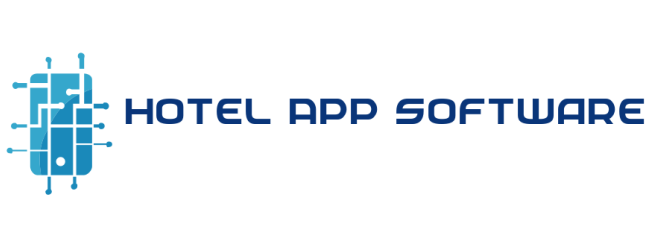
Dealing with high call volumes can be overwhelming, but with the right strategies, you can handle call traffic effectively. One such strategy is call queuing. In this guide, we will explore what is call queuing and how it can help you manage incoming calls efficiently. Discover how call queuing optimizes wait times, improves customer service, and enhances overall call traffic management.
Understanding Call Traffic
Call traffic refers to the volume of incoming calls received by a call center or customer support team. Understanding your call traffic patterns is essential for effective call management. By analyzing call traffic, you can identify peak hours, determine staffing requirements, and optimize your resources.
To handle call traffic efficiently, start by considering the following factors:
- Peak Call Hours: Identify the busiest periods when call volume is high, allowing you to allocate resources accordingly.
- Call Types: Categorize calls based on their nature, such as sales inquiries, technical support, or general inquiries. This categorization helps in efficient call routing and agent skill matching.
- Service Level Objectives: Define service level targets to ensure customer satisfaction. Service level objectives typically include metrics like average wait time, average handle time, and abandonment rate.
Optimizing Call Routing
Call routing plays a crucial role in ensuring callers are directed to the most appropriate agents or departments. By optimizing call routing, you can minimize wait times and enhance the customer experience.
Consider the following strategies for efficient call routing:
- Skills-Based Routing: Route calls to agents with specific skills or expertise required to handle the caller’s issue effectively.
- Priority Routing: Assign priority levels to calls based on predefined criteria. Urgent or VIP calls can be prioritized, ensuring prompt attention.
- Geographic Routing: If your organization operates in multiple locations, route calls based on the caller’s geographic location for better local support.
Implementing Interactive Voice Response (IVR)
Interactive Voice Response (IVR) systems allow callers to navigate through menu options using their phone’s touch-tone keypad or voice commands. IVR can help automate routine inquiries, reduce agent workload, and provide self-service options to callers.
Here are some best practices when implementing IVR:
- Keep Menus Simple: Design concise and easy-to-navigate menus to prevent caller frustration.
- Offer Self-Service Options: Enable callers to access account information, track orders, or perform common tasks without agent assistance.
- Provide Opt-Out Options: Allow callers to bypass IVR and connect with a live agent if needed.
Leveraging Automatic Call Distributors (ACD)
Automatic Call Distributors (ACDs) are software systems that handle incoming calls and distribute them among available agents. ACDs ensure calls are routed efficiently, reducing wait times and optimizing agent utilization.
Consider the following when leveraging ACDs:
- Skill-Based Routing: Set up ACDs to route calls based on agent skills, ensuring callers are connected to the most suitable representative.
- Queue Prioritization: Implement priority queues for urgent calls, ensuring they receive immediate attention.
- Overflow Routing: Configure overflow rules to route calls to backup teams or external call centers during peak periods or when your internal team is at capacity.
Utilizing Call Queues
Call queues allow callers to wait in line until an agent becomes available. Effectively managing call queues can significantly impact customer satisfaction.
Follow these guidelines for efficient call queue management:
- Estimated Wait Time: Inform callers of their expected wait time to manage expectations and reduce anxiety.
- Queue Position Updates: Regularly update callers about their position in the queue to keep them informed.
- Offer Call-Back Options: Provide callers with the option to request a callback instead of waiting in the queue. This can be particularly useful during peak traffic periods.
Example: Call Queue Performance Metrics
To track and optimize the performance of call queues, organizations can measure key metrics. Here’s an example of call queue performance metrics:
| Metric | Description |
| Average Wait Time | The average time callers spend in the queue before being connected |
| Queue Abandonment Rate | The percentage of callers who hang up or abandon the call while waiting in the queue |
| Service Level | The percentage of calls answered within a specified wait time target |
| Queue Length | The number of callers currently waiting in the queue |
| Agent Occupancy | The percentage of time agents spend handling calls |
By tracking these metrics, organizations can identify trends, spot areas for improvement, and optimize the call queue management process to enhance the overall customer experience.
Utilizing call queues effectively is a key component of efficient call traffic handling. By implementing best practices, such as providing estimated wait times, offering call-back options, and segmenting the queue, organizations can optimize their call center operations and deliver exceptional customer service.
Enhancing Agent Productivity
Equipping your agents with the right tools and empowering them to deliver exceptional service is vital for effective call traffic handling.
Consider the following strategies to enhance agent productivity:
- Agent Training and Coaching: Provide comprehensive training programs to improve agent knowledge and skills. Regular coaching sessions can also help address performance gaps.
- Knowledge Base and CRM Integration: Integrate a knowledge base and customer relationship management (CRM) system to provide agents with quick access to information.
- Real-Time Assistance: Enable agents to collaborate and seek assistance from subject matter experts through real-time messaging or internal chat platforms.
Analyzing Call Traffic Data
Data analysis provides valuable insights into call traffic patterns, customer behavior, and operational efficiency. By leveraging call traffic data, you can make data-driven decisions to optimize your call center operations.
Consider the following analysis techniques:
- Call Volume Trends: Identify trends in call volume based on time of day, day of the week, or specific periods. This analysis helps in resource planning and staffing adjustments.
- Call Outcome Analysis: Categorize call outcomes (e.g., resolved, escalated, abandoned) to identify areas for improvement in service delivery.
- Customer Feedback Analysis: Collect and analyze customer feedback through post-call surveys or quality monitoring. This feedback can highlight areas of customer dissatisfaction or opportunities for improvement.
Key Metrics for Analyzing Call Traffic Data
To gain meaningful insights from call traffic data, organizations should focus on key metrics that reflect call center performance and customer experience. Here are some essential metrics for analyzing call traffic data:
| Metric | Description |
| Average Handle Time | The average duration agents spend on each call |
| First Call Resolution | The percentage of calls resolved during the initial contact |
| Abandonment Rate | The percentage of callers who hang up or abandon the call before reaching an agent |
| Service Level | The percentage of calls answered within a specified wait time target |
| Call Arrival Patterns | Analysis of call volume based on time of day, day of the week, or other defined periods |
| Customer Satisfaction | Feedback collected from post-call surveys or customer satisfaction scores |
By tracking and analyzing these metrics, organizations can gain insights into their call center’s performance, customer satisfaction levels, and areas for improvement.
Offering Self-Service Options
Providing self-service options to callers can significantly reduce call traffic and improve overall customer satisfaction. Offering self-service channels allows callers to find information or resolve basic inquiries without agent intervention.
Consider implementing the following self-service options:
- Interactive FAQs: Create interactive Frequently Asked Questions (FAQs) on your website or IVR system, allowing callers to find answers quickly.
- Chatbots: Implement AI-powered chatbots that can understand and respond to customer queries, providing instant assistance.
- Knowledge Base: Develop a comprehensive knowledge base that covers common customer inquiries and troubleshooting steps.
Managing Peak Call Volumes
Managing peak call volumes is a critical aspect of call traffic management. During periods of high call volumes, organizations must implement strategies to ensure efficient handling of calls and maintain customer satisfaction. Here are three key approaches to effectively manage peak call volumes:
Firstly, organizations can employ staffing flexibility. This involves having a flexible schedule for agents, staggered breaks, and additional staff during peak periods. By aligning staffing levels with call volumes, organizations can ensure an adequate number of agents available to handle incoming calls, reducing wait times and improving customer service.
Secondly, virtual queuing can be implemented as an option for callers. Virtual queuing allows callers to request a callback instead of waiting on hold. This feature provides customers with the convenience of continuing with their activities while waiting for a callback, minimizing frustration and reducing perceived wait times.
Thirdly, organizations can explore outsourcing options during peak call volumes. This involves partnering with external call centers or leveraging overflow call handling services. By outsourcing overflow calls, organizations can ensure prompt customer support and maintain service levels, even during periods of high call volumes.
Implementing these strategies enables organizations to effectively manage peak call volumes, optimize call traffic flow, and deliver exceptional customer service. By being proactive and prepared for high call volumes, organizations can ensure a positive customer experience and maintain customer loyalty.
Empowering Your Support Team
A motivated and empowered support team is crucial for handling call traffic effectively. By fostering a positive work environment and providing the necessary tools, you can empower your team to deliver exceptional service.
Consider the following strategies to empower your support team:
- Agent Recognition Programs: Implement recognition programs to acknowledge and reward agents for their exceptional performance.
- Regular Feedback and Coaching: Provide constructive feedback and coaching sessions to help agents improve their skills and performance.
- Agent Feedback Channels: Create channels for agents to provide feedback and suggestions regarding process improvements or system enhancements.
FAQs
- Q: How can I reduce caller wait times?
- A: Optimizing call routing, implementing IVR systems, and leveraging call queues can help reduce wait times and improve the caller experience.
- Q: What is the role of data analysis in call traffic handling?
- A: Analyzing call traffic data provides insights into call volume trends, customer behavior, and operational efficiency, enabling informed decision-making.
- Q: What are some effective self-service options for callers?
- A: Interactive FAQs, chatbots, and knowledge bases are popular self-service options that empower callers to find information or resolve inquiries independently.
- Q: How can I manage peak call volumes efficiently?
- A: Implementing staffing flexibility, offering virtual queuing, and exploring outsourcing options are effective strategies to manage peak call volumes.
- Q: What are some ways to empower my support team?
- A: Agent recognition programs, regular feedback and coaching, and providing agent feedback channels can empower your support team to deliver exceptional service.
- Q: How can I ensure customer satisfaction during high call traffic periods?
- A: By implementing efficient call routing, minimizing wait times, and providing self-service options, you can enhance customer satisfaction even during high call traffic periods.
Conclusion
Effectively handling call traffic is crucial for delivering exceptional customer service and optimizing call center operations. By implementing strategies such as optimizing call routing, leveraging IVR and ACD systems, and offering self-service options, you can efficiently manage call traffic and ensure customer satisfaction. Regularly analyzing call traffic data and empowering your support team further contribute to a seamless call experience. Embrace these expert strategies and watch your call traffic management efforts yield positive results.
